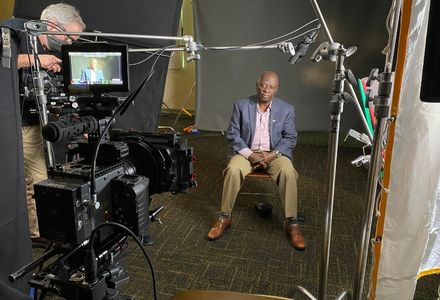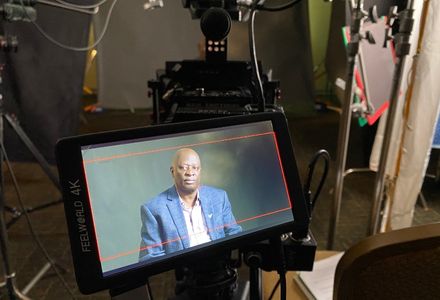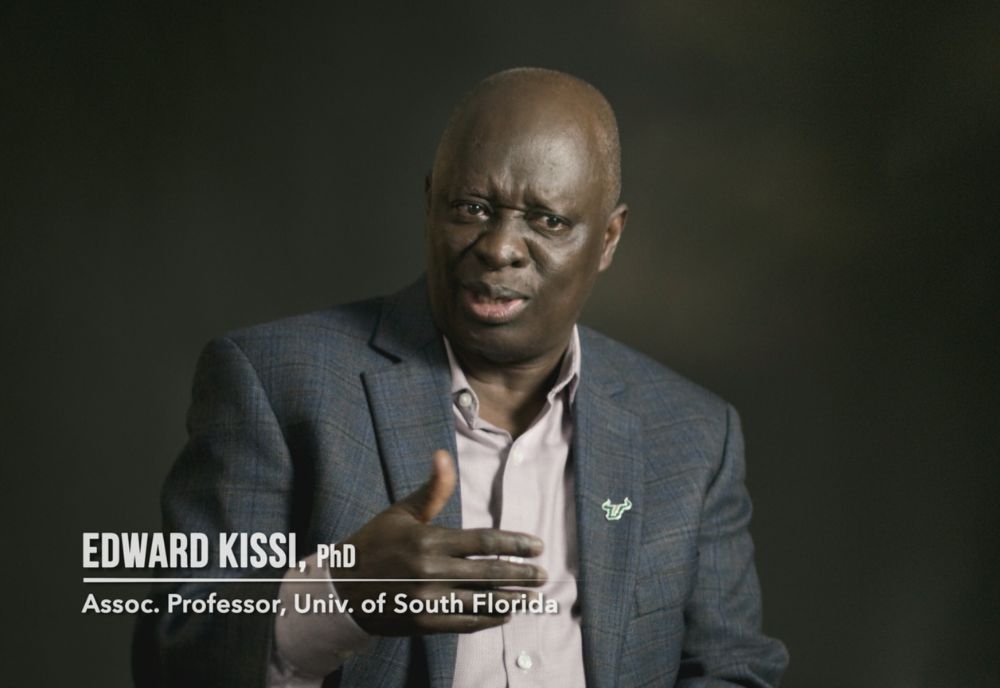On November 20, 1945, 24 high-ranking Nazi military and political leaders filed into Palace of Justice in Nuremberg, Germany to testify before the International Military Tribunal (IMT) on the atrocities of the Holocaust. The trials were the first of their kind and the recordings and broadcast of the trials showed the world just how abhorrent the acts of the Third Reich were, as well as the extent to which they plotted the systematic murder of more than six million Jews.

While much of the testimony was aired, some tapes of the testimony were only recently discovered. National Geographic brings this never-before-heard trial testimony to light in Nazis at Nuremberg: The Lost Testimony.
Making its U.S. debut on January 26, the program featured several Holocaust experts and scholars to analyze the newly found testimony. Dr. Edward Kissi, an associate professor in the School of Interdisciplinary Global Studies at USF, is featured in the program and found some of the new information in the documentary surprising and shocking.
More specifically, Kissi points to what the lost testimony exposed about the Nazi provocation leading up to World War II.
“As the trial and additional testimony revealed, the Nazi regime actually provoked the war by forcing individuals from some concentration and detention camps to dress in Polish military uniforms and ordering them to attack some German installations. This gave the Nazi regime a pretext for attacking Poland,” he explains. “Those camp inmates who were used to provoke a war were later killed to prevent them from ever telling the truth.”

These new details offer insight into the calculated actions of the Nazis to justify their swift takeover of surrounding countries, a plan the Nazi regime had previously vehemently denied.
Kissi also weighed in on the impact the trial testimony had on Germans, many of whom bought into the Nazi propaganda campaigns and seemingly turned a blind eye to the atrocities.
“As the documentary showed, and press reports on the trial affirmed, many Germans were shocked to see the depth of the crimes that the Nazi regime had ordered. The images of naked, mangled, and gassed bodies from the concentration camps shown at the trial, horrified not only Germans but the majority of people in the world who saw them. The Nuremberg trial exposed to many Germans the uncomfortable details and images of what the Nazi regime had carried out at Auschwitz, Treblinka, and elsewhere, all in the name of Germany and the establishment of a totalitarian state,” Kissi said.
These critically important trials established the first international criminal tribunals to prosecute high-level political officials and military authorities for war crimes and other wartime atrocities, and after nine months, the IMT delivered its judgment against the Nazi leaders on September 30 and October 1, 1946. Twelve of the defendants were sentenced to death, three to life imprisonment, four to imprisonment ranging from 10 to 20 years, and three were acquitted.

“The Nuremberg trials were responsible for internationalizing human rights and humanizing international law. The trial developed a new human rights and judicial norm that what a government does within its national boundaries to its citizens is no longer its own sovereign business, but subject to international moral oversight and even adjudication,” Kissi said. “The Universal Declaration of Human Rights and the Convention on the Prevention and Punishment of the Crime of Genocide, of 1948, are outcomes of the Nuremberg trials.”
“Today, government officials or members of political parties who wage wars of aggression or commit acts with intent to destroy a group, as the Nazi regime did, can be prosecuted for war crimes, genocide, and crimes against humanity,” Kissi said. “That is the legacy of Nuremberg.”
“Nazis at Nuremberg: The Lost Testimony” is available to stream on Hulu.
